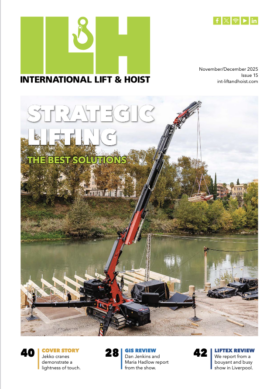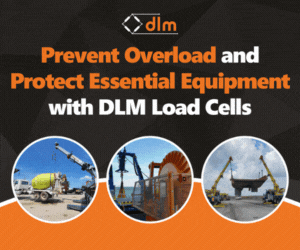)
Passing the Test
Testing must become second nature in a manufacturing or industrial environment, says Joel Cox, president at Pintsch Bubenzer USA.
Google (yes, it is a verb now) ‘test’ or ‘testing’ and many COVID-19 references will appear in the search results. These words are commonplace in the medical world; we hear of doctors testing for a disease or a friend anxiously awaiting test results. But testing shouldn’t be something associated only with a pandemic or illness. Nor should it only be conducted when something is suspected to have gone wrong.
A dictionary will tell you it means establishing the quality, performance, or reliability of something, say, before it is put into use, which suggests we should apply testing more widely, particularly in the manufacturing and industrial environments.
I was thinking this when I was looking at our dyno test stands (some might call them dynamometer test stables or benches) on my last trip to our research and development centre in Betzdorf, Germany. There, we have a unit for testing smaller caliper and drum brakes, and another for larger caliper and hydraulic brakes. Our goal was to not only build a testing centre that could work with today’s highest capacity equipment, but also tomorrow’s. Given the pace of evolution—we recently installed a series of Twin Safe TS800 brakes on two 10,000t (22 million pound) capacity cranes and auxiliary hoists aboard a giant semi-submersible crane vessel – that vision required us to think big.
I’ll come back to brakes and our dyno test stands because I think they’re interesting in their own right, but my point is to highlight the extent of research, development and testing that must take place at the sharp end of industry. And it should filter down to all levels of manufacturing and supply chains. Reality is that things on paper, or a bar napkin, might look like the best ideas, but they do not translate well during manufacturing or subsequent testing. We only find that out when they are put to the test. Skip that important stage at your peril.
Fact: to have a proven, repeatable product you must endure the most rigorous of design and testing processes.
Structural report
All companies should conduct in-house testing. It’s not practical, or necessary, to put giant test stands in every facility, but a level of testing must be present in line with the products and procedures of a company. Even a distributor of product that has been tested at the point of manufacture and elsewhere in a supply chain must test or verify that the equipment is fit for purpose. Taking ownership of testing acknowledges that human lives, expensive machinery and costly lawsuits are being gambled with if it is overlooked. I even encourage our competitors to constantly test, just as we have tested their equipment for the sake of comparison.
To be effective, testing must be part of a process. Put simply, without a framework around the testing procedures, what’s the point? When a doctor takes a test, the patient gets the results. Imagine giving a blood sample but never getting the all clear or a programme of treatment. It’s the same with coronavirus tests; the point is to track and trace the virus. At a manufacturer, the principle is broadly the same. Take data recording, 24/7 cycle information, and repeatability data just for starters. Then think about failure analysis in all its forms, including how many operations a brake can perform before failure (it might be six million cycles) and development of a maintenance plan and requirement for parts. All scenarios must be covered so there are no surprises when the product is installed in the field.
Testing should only be made as complicated as it needs to be, however. It is possible to over-test a product or item. When large scale testing equipment and engineers to oversee the programme are involved, this can result in inefficiency and unnecessary cost. It’s important, therefore, to monitor the balance between the information that is generated versus the demand for it. In an ideal scenario, there would be a little bit more detail than is required, but not enough so that thousands of pounds, dollars and/or working hours are being wasted.
Take a brake
I want to drill a little deeper into brakes and brake product testing, which is my world, after all. This is a wheelhouse where 265522.37 inch-pounds force (in lbf) and 30000 Newton metres (Nm) are bread and butter when dynamically testing thruster brakes. We can use up to 1200mm diameter discs; we can test up to full capacity with maximum 2200rpm and max inertia of 936,907kgmsq.
I’m not trying to blind this magazine’s good readers with science, but it emphasises the importance of testing.
Universal testing dynos give us the ability to change and shift weight to mock-up exact scenarios to test against, not just stop or go:
How quick can we stop?
How fast do we react?
How fast can we stop on a snagged load?
How many times can we emergency stop back to back before failure?
These are all situational examples we test for, potentially saving lives in doing so.
Further, we can test lining technology, heat signatures on stopping, lining lifespan, and static versus dynamic coefficient friction factors. Between cool downs meanwhile we can see how performance changes on multiple emergency stops and condition monitor along with thermal capacity and thermal imagery. This in conjunction with high speed cameras allows for very scientific footage and data logging.
Much of our competition and copycats around the world have made a business of making linings but not doing it well. Extensive testing and pushing the boundaries have helped us learn a great deal, which is incentive for anyone to invest in such procedures. Our sintered linings on our standard SB28.3 for example have a maximum running speed with steel discs of 105 m/s (234 mph) and maximum temperatures of 900˚C (1652˚F).
We easily see our friction factor stay near 0.4μ and drop typically no lower than 0.35μ dynamically. We also do extensive testing with our brake linings with contaminates such as grease and solvents to see friction loss in real-world testing. In our yaw brakes for wind turbines we also test noise prevention and vibration for dynamic friction with or without containments on the linings. We have worked hard to be paired with the quietest linings in the business, all because of a commitment to testing.
We also have extensive climate chambers for our brakes, to test heat, cold, humidity and salt spray. We have many market specific testing machines for wind power and ports, based on lifecycle data logging and 24/7 running—for months and years.
Naturally, the level of testing required to provide world-class product in the brakes market makes the barrier to entry high.











